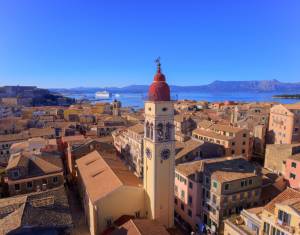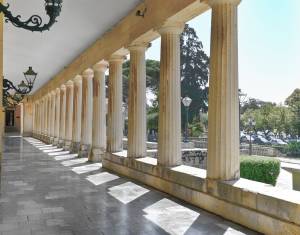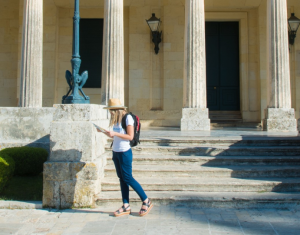It was meant to be; Corfu Town, a UNESCO World Heritage Site nowadays, unfolds a long and varied history with evidence of settlements dating back to the 8th century BC. This well-preserved cultural jewel is formidable for its medieval Old Town, its emblematic fortresses, and its narrow streets, known as “kantounia” according to the Corfiot dialect. Let's unwrap” this fascinating, multi-layered history of a charismatic place such as Corfu Town and discover Corfu Town highlights and best places to visit which have attracted so many visitors over the decades.
Corfu Town; the history behind a cultural amalgam
Corfu Town is all about a civilization blend. Various empires and countries throughout history, including the Romans, Byzantines, Venetians, French, and British, among others, have ruled this magnificent place, each one complementing its special, cultural feature.
Island’s history has been brought into being since the 8th century BC when it was settled by the Corinthians. Hence, its name “Korkyra” was given after this establishment, which afterwards evolved into a commercial center. Moving on, in 229 BC, the town was captured by the Romans. The town was renamed “Corcyra” when it was integrated into the Roman Republic. Thanks to its prominent geographical position, “Corcyra Town” flourished and thrived as a trading center. It is to be noted that it functioned as a mercantile bridge for many places across the Mediterranean with Roman merchants eventually using it as their trading base.
A significant “pause” in the enthralling history course of Corfu occurred when it was conquered by the Byzantine Empire for more than 800 years. During this period, the town became a center of Orthodox Christianity with numerous churches and monasteries built throughout the whole island. It is worth mentioning that the earliest form of the Old Fortress which covered the promontory initially contained the old town of Corfu during Byzantine times.

Nonetheless, it was the Venetians who led the town to prosperity. Consequently, Corfu Town was captured by the Venetians in the 13th century, who ruled the island for over four centuries, despite the fact that Ottoman Turks attempted to siege the town on numerous occasions. The great maritime power not only brought its know-how, thus creating a forceful mercantile center but also contributed to its architectural salience. Many of Corfu’s iconic buildings, such as the Old Fortress, the Liston Promenade, and the Nobile Teatro di San Giacomo (once a theatre but now Corfu City Hall) were built during this period.
The fall of the Venetian Republic in 1797 left the door open to the French… but not for a long time. In 1814, the British claimed Corfiot territory and ruled the town for about 50 years by leaving their own mark on the town's architecture and culture. Their main contribution involved the restoration and modernization of many civic buildings, with the Palace of St. Michael and St. George being the landmark of the British Architectural prowess.
Since 1864, Corfu has been an administrative part of Greece. Today’s cultural eminence is due to its “turbulent” history, which, nevertheless, has formed this architecturally exquisite capital. Pastel-colored walls with a bit of mold unravel the mystery, narrow and paved alleys narrate past nobility, and windows with green, slightly worn-out shutters greet you with morning messages… this is the ambiance you seek during your vacation. '
With such a a great history, Corfu Town is like an open air museum with hundreds of places to visit! But what are the best places to visit in Corfu Town? Discover Corfu Town highlights and best places to visit which have attracted so many visitors over the decades.
Old Fortress
…known also as “Fortezza Vecchia”
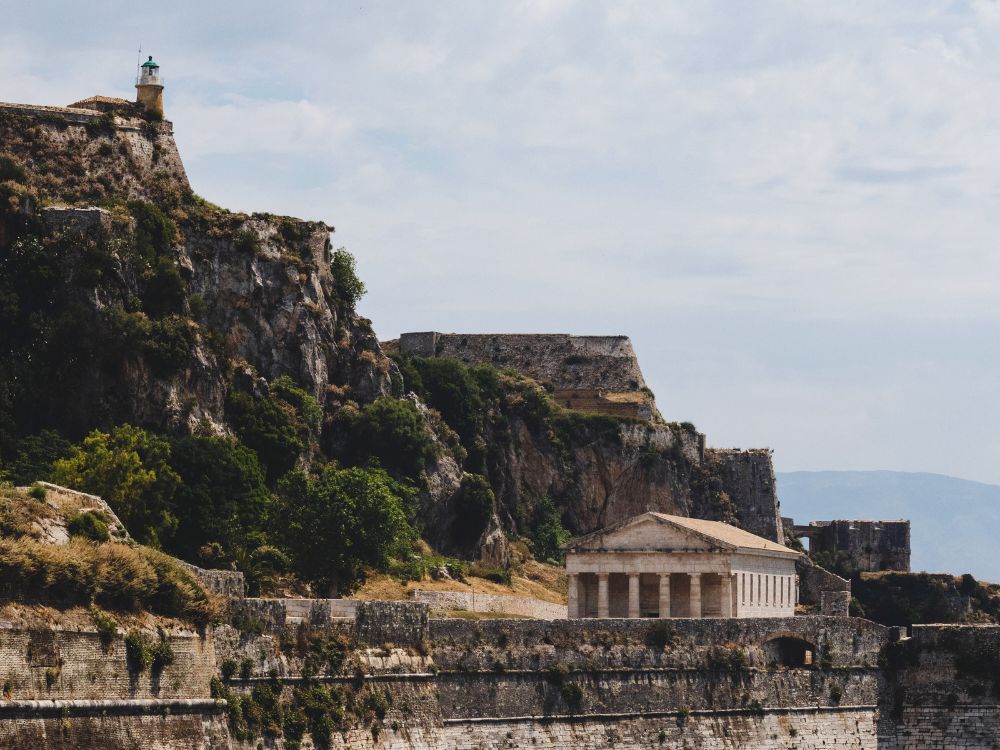
The Old Fortress constitutes one of the most reputable landmarks of Corfu Island. It is an impressive fortification and reminiscent of Corfu’s great history which dates to the Byzantine period. This great fortress which decorates elaborately the east, rocky peninsula of Corfu is situated in the city center, just across Liston Promenade and Spianada Square. The fortress was kept under construction for 15 centuries, but only three historical phases constituted the milestone of its construction. The first one stood out because of the Byzantine domination, during which the eastern hill was fortified, the second one took place in the early Venetian period, during which the fortress was transformed into an island, while the latter followed the late Venetian period, and thus created the current form of the fortress.
Today, the only way of reaching it is through the moat “Contra Fossa”, whereas walking to the top takes about 15 minutes. There, guests can enjoy a stunning view of Corfu Town and the whole island. Inwards, the Public Library of Corfu is located, where its grounds entertain many art and culture exhibits. By walking further, guests will meet the ancient-styled temple of Saint George, the Department of Music Studies of the Ionian University, as well as a small bay, where tourist yachts berth every year. The mystery of its medieval origins is complemented by the fact that the Old Fortress has an underground tunnel system, which connects its grounds with its top.
Liston Promenade
…the most cosmopolitan road all over the island

Credits for the photo: https://www.travelgo.gr
Liston is justly considered the most famous street in Corfu and without doubt, it embodies the city’s best features. This elegant building complex is located alongside the west side of Spianada Square and the narrow paths of the Old Town. Liston is magnificently decorated with vaulted arches and hanging lamps, which are opposite a line of bushy, vast green trees. French were the ones who constructed Liston in 1897, in order to achieve a copy of the “Rue de Rivoli” in Paris.
It is rumored that the name derives from the Venetian word “Lista” since it was only the aristocrats who could walk through in accordance with the catalog. During Holy Week, those gleams in purple shades create a devout atmosphere consistent with Easter and bereavement. Liston is a busy meeting point since there are many cafeterias, restaurants, as well as boutiques. It is a suitable spot for reposting and admiring the city’s beauty. Most philharmonic parades and litanies cross Liston offering an interesting change of scenery.
Palace of St. Michael & St. George
…and Museum of Asian Art
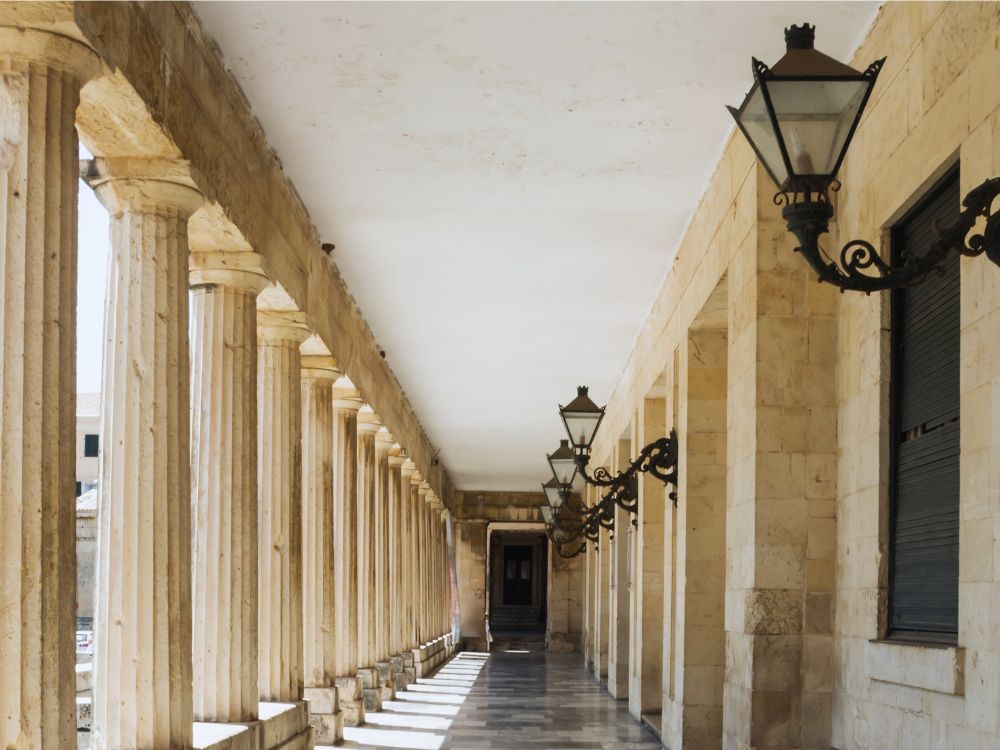
The Palace of Saint Michael and Saint George is home to the Museum of Asian Art, while it remains the largest building, dating back to the English rule period. The building was designed according to Greek and Roman architecture, while it was made of actual Maltese stone.
When it comes to the Asian Art Museum, it is to be mentioned that it is the only one in Greece which hosts art and cultural exhibits from the Far East and India. It was established in 1928 and started as the Museum of Sino-Japanese Art. Nevertheless, the Museum changed, evolved, and added halls. To this fact, the donation of Gregorios Manos’ Sino-Japanese collection to the Greek state has significantly contributed.
Since then, the Museum has been enriched by other donated exhibitions, which today count over 15,000. Masterpieces from India, Pakistan, Tibet, Siam, and Southeast Asia also decorate Museum’s exhibitions, whilst objects of nomads of Central Asia and worship objects of Hinduism, Buddhism, and Jainism add to the magnificence of the collections.
Archaeological Museum
…with its notable exhibits
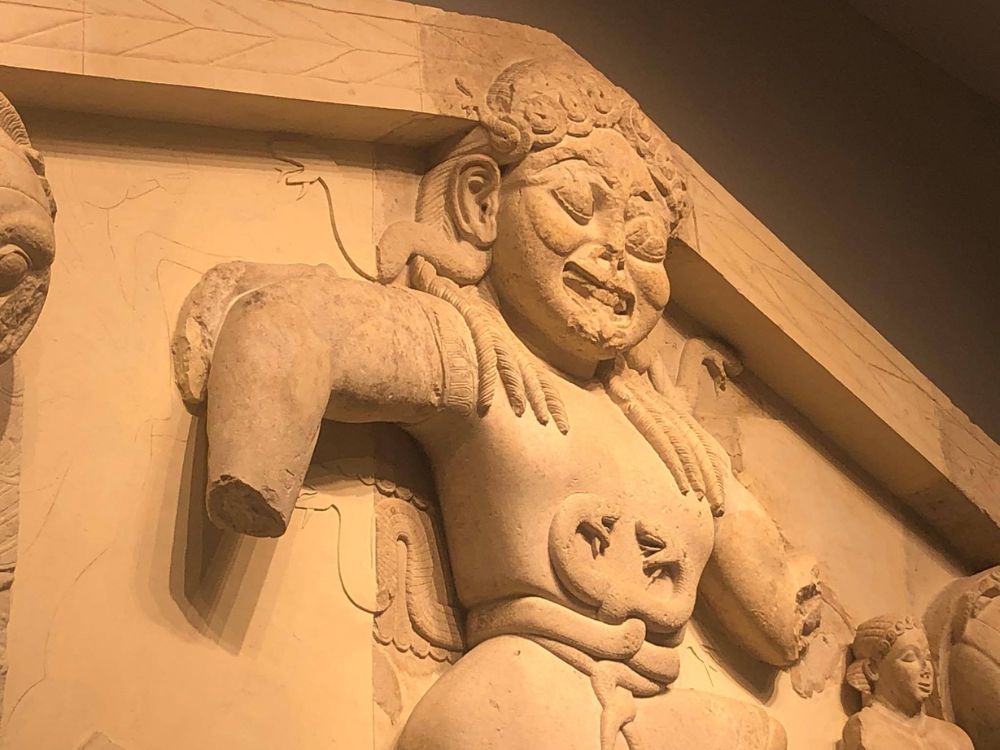
The Archaeological Museum of Corfu hosts ancient exhibits and marvelous collections, which derive from every part of Corfu. Originally, the Museum was about to host the archaeological findings from the Temple of Artemis. Nevertheless, two more exhibit halls were added in 1994 in order to complement the museum’s flamboyance. These two newly added halls host exhibits, which refer to the findings from all over Corfu. Its most important figure is the unique pediment of Gorgona-Medusa, which is a part of the Temple of Artemis. Being dated back to 585 BC, it constitutes the oldest stone pediment in Greece.
The collection includes sculptures, bronze statuettes, as well as objects from ancient pottery, which elaborately decorate the ground floor spaces of the museum. On the mezzanine floor, the visitor has the opportunity to study topographical maps, which indicate the development of habitation on the island of Corfu from the Paleolithic Age to Roman times.
However, the Museum hosts three of the most important exhibits, which are located respectively in the south, west, and north hall. The southern hall is adorned by the impressive exhibit "Leon of Menecrates", which dates from the 7th century BC. The southern hall is dominated by the majestic pediment of Gorgos, which combines elements of Corinthian art. This is the stone pediment, which until its installation in the museum, decorated the Doric Temple of Artemis in Agios Theodoros of ancient Korkyra. Finally, in the northern hall, the majestic pediment of Dionysus, which depicts a Dionysian Symposium, impresses.
Saint Spyridon Church
The Patron Saint of the Island
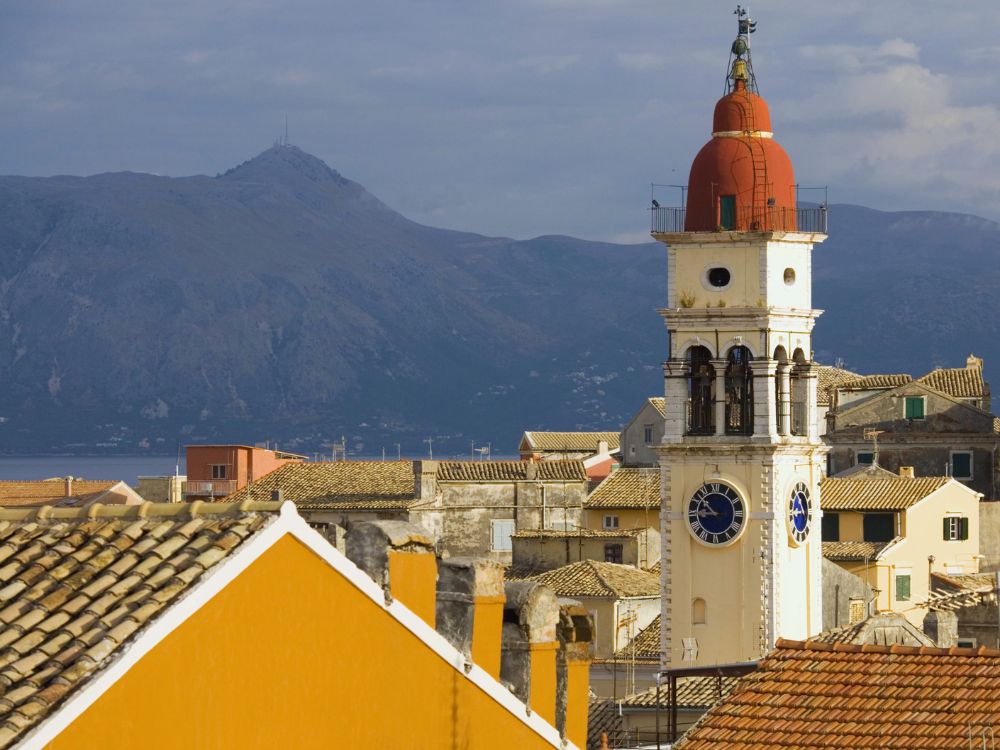
Credits for the photo: https://www.lonelyplanet.com/
The church of Saint Spyridon, who is considered the patron saint of the island, is significantly the most reputable church all over Corfu. It was built initially in San Rocco Square. However, in 1590 it was moved to its present location, namely in the center of the Old Town. This historically extraordinary place of the city is complemented by the church’s meticulous Venetian architecture. Its most remarkable feature constitutes the bell tower with a red dome.
Beyond the red dome, the bell town greatly resembles the bell tower of the Greek Church St. Giorgio’s Del Greci, in Venice. After the fall of Constantinople in 1453, the remains of Saint Spyridon were brought to Corfu and until today are kept behind the Alter. 4 times per year and on specific dates (Palm Sunday, Good Friday, August 11th, first Sunday of November), they get carried around the Corfiot streets. It is a celebration that symbolizes Saint Spyridon’s miracles.
Casa Parlante
…a vivid history!

Credits for the photo: http://casaparlante.gr/
"The talking museum" welcomes you to a magical experience, which will take you back to the 19th century and transport you to the aristocratic everyday life of the nobles of Corfu. Conte welcomes visitors to his old mansion, which with its faithful and elaborate decoration, promises to awaken the senses and create a nostalgic mood for the past.
It is the authentic depiction and revival of the daily life of the then aristocrats, who were influenced by the Venetians, the English, and the French conquerors. The museum is located in the Old Town of Corfu, on the well-known street with the philharmonics and near the welcoming, green Spianada Square. The museum consists of 10 rooms, which are decorated with masterful creations, while these are brought back to life with the dummies of robotic technology. A museum worth visiting, with which daily life at the time is outlined and the evolution of Corfu history is justified.
“I need more…!”

There is no doubt that Corfu Town is the mother of admirable historical places. However, Corfu Old Town is a living museum on its own. There is no better delight than strolling around and experiencing the city to the fullest. Without further ado, here are some tips for you to take back in an “Old Town Getaway”.
First and foremost… walking around the city is a must! In order for you to live Corfu’s vibrant atmosphere, you should explore every, little corner. Definitely, the opaque-colored, quaint buildings in combination with the mesmerizing, turquoise waters will leave you speechless.
Secondly, do not forget to savor local, tasteful dishes; it is likely impossible that you will not get excited with all these local flavors. You’d better try “pastitsada”, one of the most typical meals of the Corfiot gastronomy, “sofrito”, which has clear culinary influences from Italy, as well as “bourdeto”, a thick fish soup which is sought-after among the Ionian Islands. Do not forget to grab your ice cream with kumquat flavor!
Lastly, how about carrying “Corfu” with you? Do not forget to make your purchases; souvenirs, originally handmade items by Greek designers, and balletic, summer clothing are some of the options that you can find while wandering the commercial streets of Old Town.
